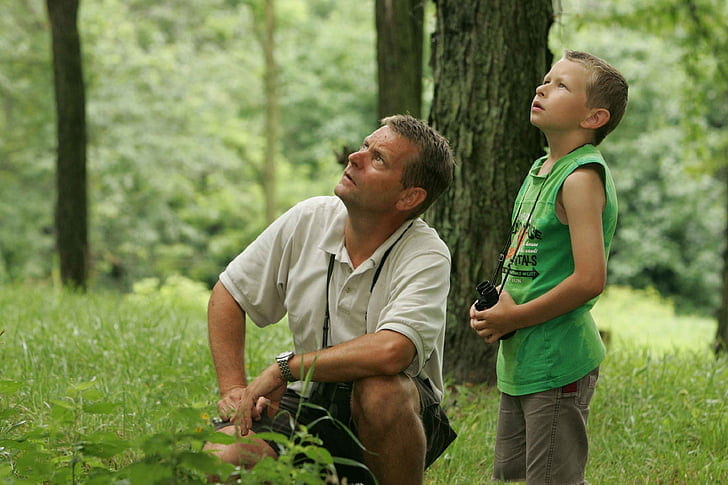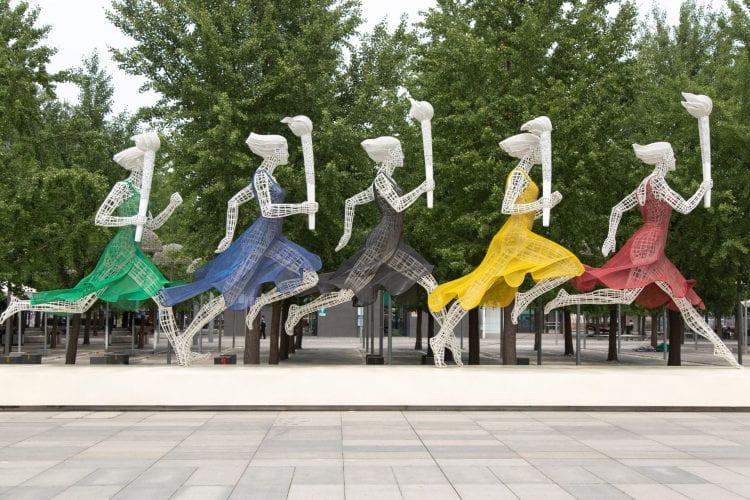What if we approached each day like a bird watcher? Poised, observant, and listening attentively. Such a sagacious approach might translate into a clear differentiation between a “digitally” connected world and what it means to truly be connected. Amidst the increasing prevalence of decomposing communities and growing isolation, it might do humanity well, or even just ourselves. Pause is necessary, as is examining the choices we make. Computers and cell phones, not unlike firearms, cannot and should not entirely shoulder the blame. Rather, it behooves us to closely examine whether we are using the technology, or if it is “using” us.
Countless bowed heads stare at 5-inch screens, drowning humanity in ubiquitous distraction. A relatively recent “dependence” now is considered “normal.” An addictive habit arguably acts as interference in our ability to relate one human to another. Though not entirely true because one must consider how tech is utilized. Still, vying for our attention is very real. One recent report cites how our brain consumes 11 million bits of information every second. Trapped in such a hurricane, might we return to center? Where possibly at the eye of such a storm is suspended madness; poise and high regard for the art of conversation.
A world of opportunity circulates all around us. If only we will look up in stillness. Like a bird watcher.
If only we will listen.
Like a bird watcher.
Listening is Difficult
One of the beauties about listening is that is free, and yet so rare. An equalizer of sorts, as listening, cannot be correlated with socio-economics, race, or politics. Though there are listening “skills,” to listen is more a question of willingness than technique. Seth Godin maintains that listening is difficult. “The hardest step in better listening is the first one: do it on purpose. Make the effort to actually be good at it.”
Five years ago I likely would have scoffed at the idea of relationships being forged in an online setting. Students would share how they had “friends” online that they gamed with, talked/chatted with, etc. An inkling of intrigue often led to my asking an array of questions, a desire to understand this “phenomenon” better. Yet, I always grew a little more than disbelieving. The start of a COVID school year online, however, offered my own experience and a window into what it was like to develop relationships online. At the time there was a disagreement about whether or not students should be required to show their faces. Forced as it was, sometimes coaching students to appear on screen was required. All the while, it was interesting to consider how much we might value seeing a person if we are speaking with them. Did it have something to do with visual cues provided to indicate whether students were truly listening?
A Sense of Belonging is Embedded in Re-Imagining Learning
Fast forward a few years as I dove deeper into the “waters” of what it might be like to develop relationships in an online setting. One big difference was that students elected to enroll in the online course. Of equal importance was that Global Online Academy (GOA) was not “just another” online educational platform. Behind GOA was a vision for a new educational system eager to adapt to students, rather than asking students to adapt to educational systems in decay. Their mission is to reimagine learning to empower students and educators to thrive in a globally networked society. A component of this reimagining learning includes teacher competency to build collaborative communities. Students should not feel isolated but instead, invited into communities that are built on trust, care, collaboration, and high expectations. A place where students feel connected but also empowered. More equitable systems and structures are embedded in such a design, in an effort to create a more socially just world. Learning to listen is a cornerstone and one strategy employed throughout GOA courses are routine opportunities for students and teachers to connect via Zoom meetings. Never under the auspices of a lectured approach, synchronous time is regarded as “gold.” Student and teacher locations span the globe, and such collaboration allows for new perspectives, as conversations are infused with differing cultural and life experiences. Wellsprings waiting to be tapped, however wholly hinged on a willingness to listen.
Video Use as a Medium to Build Relationships
A routine assignment employed in the GOA course I facilitated was video reflection at the end of a module. The power of these 2-dimensional recordings can not nor should be underestimated. After the second video, I felt like I knew some students better than I sometimes knew students in an in-person setting after a year. Why? A degree of the power could come down to a distilled approach, the essence being conveyed. But also a greater degree of willingness to be vulnerable as students just looked at the camera and talked. Without the worry of what the listener might be thinking or might say.
Surely we all have found ourselves at one time or another, thinking about what we are going to say in a conversation and not really listening. Wanting to take OUR turn. However, in this case, it’s a talking head approach. Linear, from A to M (or maybe Z!), with no stops or interjections of the listening.
To truly experience relationship building requires an honest willingness to listen to students talk for, 5-minutes at a time. Simon Sinek asserts the need for change so the focus is on input and not the customary output. Maybe a bit of an investor mentality is what is required. To listen to a 5-minute video is not much. However, multiplied by twenty students, suddenly requires nearly two hours. And how often do we just listen for two hours?
Understanding that conversations, like relationships, are not one-way, meant I often responded in video form. This too takes time but has the potential to pay huge dividends. To build relationships but also provide the necessary quality of feedback students can learn from. Often congratulatory but also balanced and encouraging growth. For example feedback on the important role of feedback, “Abigail I understand how you do not want to come off as critiquing someone and I appreciate this. However, you have so much to offer and what might help is if you are intentional about separating the individual from the work/art/assignment. We each have our perspective and I’ve seen how you can offer truly valuable feedback.”
This video exchange approach spurs the conditions ripe for developing a community and a sense of belonging. These relationships developed out of conversations follow a different rhythm, however, are incredibly rich. Possible because we truly are listening to each other. How many students have a chance to share with a teacher for five uninterrupted minutes? And how many receive five minutes of personal and specific feedback?
This is special. A reimagining of methods of learning which truly create belonging and empowerment. Methods aligned with the acumen of Brene Brown, “We have to listen to understand in the same way we want to be understood.”
A Difference Between Hearing and Listening
I wonder sometimes if certain students listen just so they can speak. The beginning of each school year requires a bit of time to develop a community unwilling to tolerate speakers interrupting each other. This is similar in Zoom and yet the presence of lag seemingly builds in a tendency to be more patient and wait for your turn to speak. To listen with true intent requires slowing down. Simone Buitendijk, Vice-Chancellor at the University of Leeds shares, “We need to practice the art of talking with intent and, more importantly, the art of listening with intent.” Adding earnest in our lives, as we trade an ounce of narcism for a pound of that which extends beyond ourselves. This does not mean abandoning the likes of Instagram, nor must we be hard-pressed to develop listening habits overnight. Instead, a growing consciousness of the power of being present is required. As well, equal parts intentionality and habit, as we move beyond mere hearing. In Dr. Kristen Fuller’s “The Difference Between Hearing and Listening,” she emphasizes how “Listening requires empathy, curiosity, and motivation.”
Tis’ the Season to Give the Gift of Our Time and Attention
One might hear the morning bird song out the window.
Then, make a conscious choice to slow down, remove distractions (yes, that cell phone!), and listen.
If only we will listen.
Like a bird watcher.
To truly listen to the birds may just result in a calming of the nervous system, as well as a greater sense of connection. Such a choice need not cease with the birds. Think what might result when we begin to listen with intention to each other! The choice is ours.
Why not slow down, be present and give the gift of our time and attention?
##############







 SEL, AI, SDGs. Awash in acronym-dom, which one grapples most for your attention? “Yes,” you may answer with a non-sequitur because holistically, no one is more important than the other. Each related but also if not rooted in humanity, layered in complexity. Yet, in a certain degree of stillness, there is a possibility to return to the simple. Not a gadget or gimmick. But, to what always has and likely always will matter most. Relationships and humanity.
SEL, AI, SDGs. Awash in acronym-dom, which one grapples most for your attention? “Yes,” you may answer with a non-sequitur because holistically, no one is more important than the other. Each related but also if not rooted in humanity, layered in complexity. Yet, in a certain degree of stillness, there is a possibility to return to the simple. Not a gadget or gimmick. But, to what always has and likely always will matter most. Relationships and humanity.







